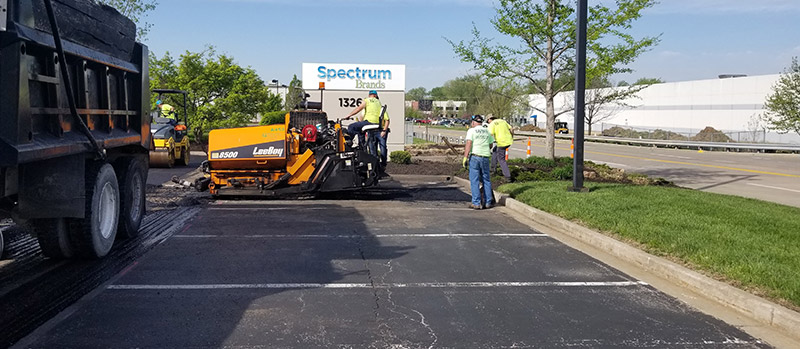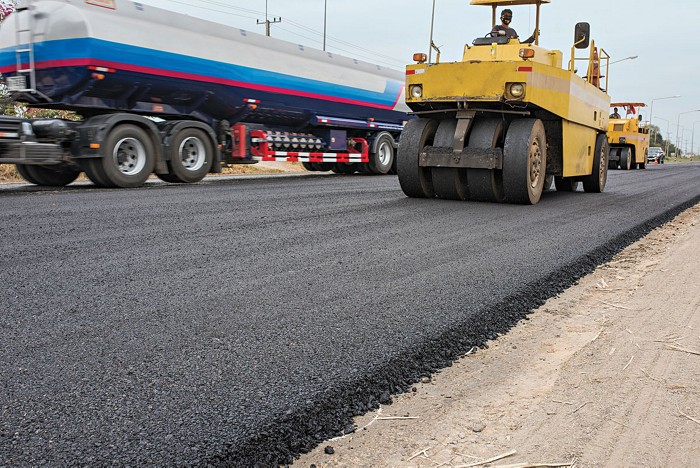9 Easy Facts About A1 Professional Asphalt & Sealing Llc Shown
9 Easy Facts About A1 Professional Asphalt & Sealing Llc Shown
Blog Article
Not known Facts About A1 Professional Asphalt & Sealing Llc
Table of ContentsThe Definitive Guide for A1 Professional Asphalt & Sealing LlcThe 15-Second Trick For A1 Professional Asphalt & Sealing LlcEverything about A1 Professional Asphalt & Sealing LlcNot known Details About A1 Professional Asphalt & Sealing Llc Not known Incorrect Statements About A1 Professional Asphalt & Sealing Llc

The oil in an automobile engine is not simply oil. It consists of a selection of ingredients to improve the automobile's performance. These include polymers, thickness modifiers, heat stabilizers, added lubes, and wear ingredients. The REOB contains all the ingredients that were in the waste oil in addition to the wear metals from the engine (mainly iron and copper).
However, by making numerous blends making use of different REOB examples and different asphalt binders, the variations mainly can be balanced out. Several States supplied samples of well-known REOB structure to TFHRC researchers, who examined the samples to compare the portion of included (recognized) REOB to the discovered (examined) quantity. The evaluations showed an equivalent percentage of added and located REOB.
Getting The A1 Professional Asphalt & Sealing Llc To Work
None of those States recognized that the asphalt they were buying included REOB. One State insisted its samples had no REOB - https://www.goodreads.com/user/show/177529233-john-tally.
Of the 1,532 examples examined, 12 percent had REOB, and some contained substantially high levels of it at 1020 percent. The highest possible degree was 34 percent in an example from Texas, which TxDOT had actually utilized in a patching substance. This screening also disclosed the visibility of phosphoric acid in 11 percent of the samples, and 2 percent included ground tire rubber.
2 years earlier at TRB's annual conference, the Federal researchers held an REOB workshop and provided the findings of their laboratory assessments to a standing room-only group. Although some companies do not especially ban REOB, they do enforce physical tests that preclude its useeffectively a restriction. a-1 asphalt. Others do not ban it by spec, however have agreements with asphalt suppliers to avoid using REOB
Some Known Details About A1 Professional Asphalt & Sealing Llc
Ohio and Texas limit degrees to less than 5 percent of the asphalt. To develop a trustworthy examination approach that all States can utilize, the TFHRC scientists set up a round-robin test strategy.
In total amount, the scientists prepared and shipped 720 blends. The individuals are examining the examples independently utilizing the standards offered by the TFHRC scientists. The round-robin testing is almost finished, and TFHRC remains in the procedure of accumulating the results. The outcome will certainly be a recommended AASHTO test method that any kind of State can adopt and utilize (what is cold asphalt?).
The sidewalk with REOB, which lies 0.6 mile (1 kilometer) from the pavement without REOB, has the same subgrade, website traffic density, and environment. However, the section of Highway655 with 5 to 10 percent REOB showed significant fracturing. In this example, the existence of REOB was the determined reason for cracking at a reduced temperatures.
"In our experience in Canada, even tiny amounts of 23 percent can be a problem." An area of test sidewalk in Minnesota (MN1-4) located to include REOB likewise broke prematurely. The pavement carried out well for the very first 3 to 4 years, but then began to break. This sidewalk is additionally subject to reduced temperatures.
A1 Professional Asphalt & Sealing Llc Can Be Fun For Anyone
The examinations were not substantial, however they showed that at degrees of 6 percent or even more, the tensile strength of the asphalt dropped significantly. get more At a degree of 3.5 percent REOB, the variation in the physical test techniques was higher than the effect of REOB. It was difficult for researchers to evaluate whether REOB was present. https://padlet.com/a1asphaltsealng/my-stellar-padlet-8k4iv5oxbxezxc6c.

One binder criterion considered is the difference between the low temperature crucial spec temperature for rigidity (S) in the bending beam of light rheometer and the bending light beam rheometer creep incline (m-value) kept in mind as Tcritical. TC = TC (S) TC (m-value). Assessment of this criterion is still continuous. Two independent study teams, one from AASHTO and the other from the Asphalt Institute, wrapped up that more research study is required on using REOB in asphalt.
Formerly, all asphalt screening gauged engineering homes such as stiffness. These tests do disappoint what materials had been contributed to the asphalt. One sample gotten during the TFHRC study had a really odd evaluation. The example had the adhering to examination outcomes: Superpave PG 64-28 with a high temperature quality of 67.3 Tcritical on the bending beam of light rheometer was 6.7 levels Celsius.

Some Known Facts About A1 Professional Asphalt & Sealing Llc.
These outcomes show there are weak points in the standardized engineering screening protocols that might be made use of. The manufacturer may have an economic benefit and the product passes all the standardized tests, yet the item might not be valuable to making certain long-lasting performance. To resolve this concern and the growth of brand-new asphalt ingredients and extenders, TFHRC is starting a research program to make use of handheld spectroscopic tools, x-ray fluorescence spectroscopy, and Fourier transform infrared spectroscopy to enable evaluations to be performed in the field as opposed to needing to take examples back to the lab.
Report this page